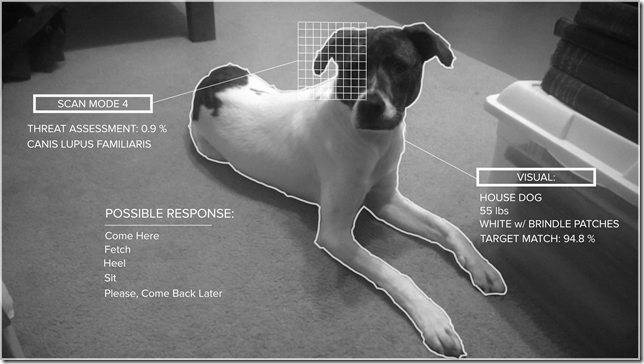It’s taken about a year but now everyone who’s interested can easily distinguish between augmented reality and virtual reality. Augmented reality experiences like the one provided by HoloLens combine digital and actual content. Virtual reality experiences like that provided by Oculus Rift are purely digital experiences. Both have commonalities such as stereoscopy, head tracking and object positioning to create the illusion that the digital objects introduced into a user’s field of view have a physical presence and can be walked around.
Sticklers may point out that there is a third kind of experience called a head-up display in which informatics are displayed at the top corner of a user’s field of view to provide digital content and text. Because head-up display devices like the now passe Google Glass do not overlay digital content on top of real world content, but instead displays them more or less side-by-side, it is not considered augmented reality.
Even with augmented reality, however, a distinction can be drawn between informational content and digital content made up of 3D models. The informational type of augmented reality, as in the picture of my dog Marcie above, is often called the Terminator view, after the first-person (first-cyborg?) camera perspective used as a story telling device in the eponymous movie. The other type of augmented reality content has variously been described inaccurately as holography by marketers or, more recently, mixed reality.
The distinction is being drawn largely to distinguish what might be called hard AR from the more typical 2D overlays on smart phones that help you find a pizza restaurant. Mixed reality is a term intended to emphasize the point that not all AR is created equal.
Abandoning the term “augmented reality” in favor of “mixed reality” to describe HoloLens and Magic Leap, however, seems a bit drastic and recalls Gresham’s Law, the observation that bad money drives out good money. When the principle is generalized, as Albert Jay Knock did in his brilliant autobiography Memoirs of a Superfluous Man, it simply means that counterfeit and derivative concepts will drive out the authentic ones.
This is what appears to be happening here. Before the advent of the iPhone, researchers were already working on augmented reality. The augmented reality experiences they were building, in turn, were not Terminator vision style. Early AR projects like KARMA from 1992 were like the type of experiences that are now being made possible in Redmond and Hollywood, Florida. Terminator vision apps only came later with the mass distribution of smart phones and the fact that flat AR experiences are the only type of AR those devices can support.
I prefer the term augmented reality because it contains within itself a longer perspective on these technologies. Ultimately, the combination of digital and real content is intended to uplift us and enhance our lives. If done right, it has the ability to re-enchant everyday life. Compared to those aspirations, the term “mixed reality” seems overly prosaic and fatally underwhelming.
I will personally continue to use the moniker “mixed reality” as a generic term when I want to talk about both virtual reality and augmented reality as a single concept. Unless the marketing juggernaut overtakes me, however, I will give preference to the more precise and aspirational term “augmented reality” when talking about HoloLens, Magic Leap and cool projects like RoomAlive.

